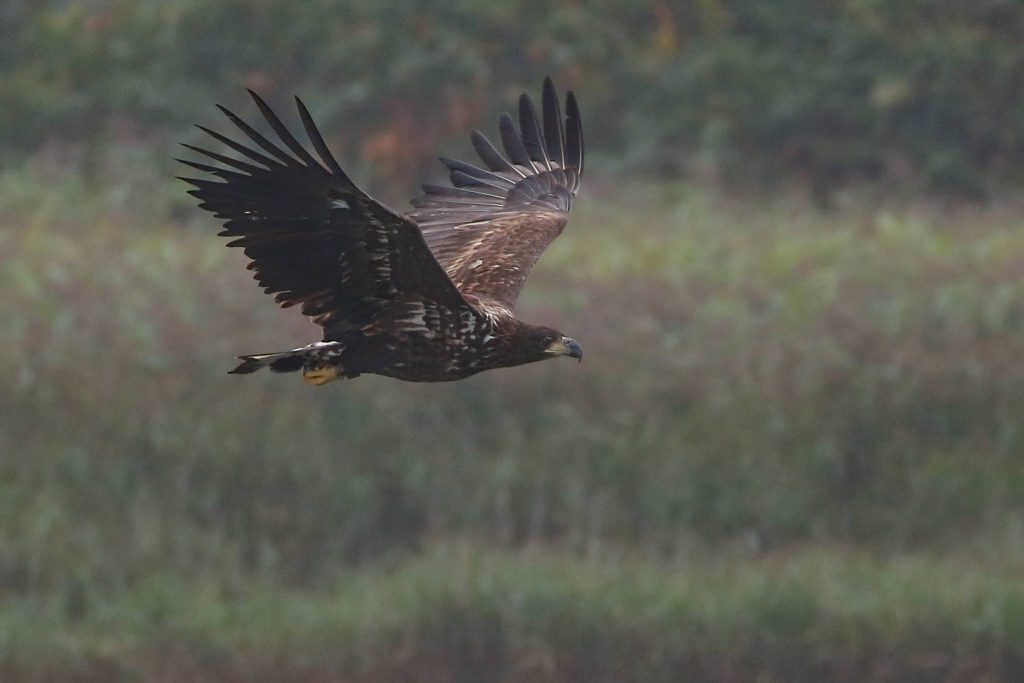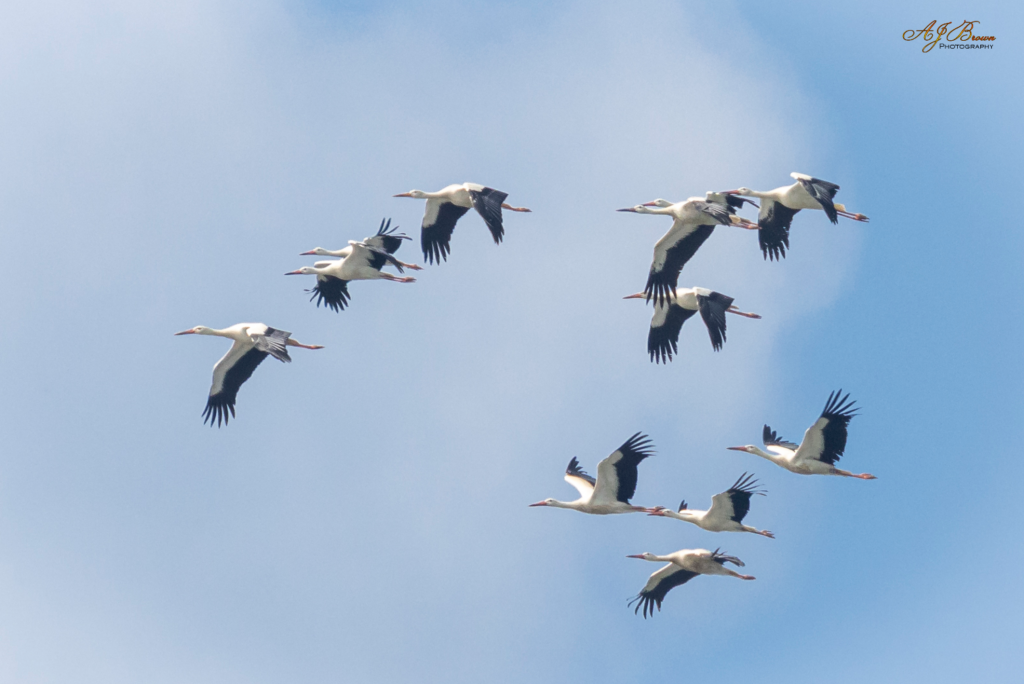A series of inspiring environmental initiatives that are being carried out across the south coast could provide multiple eco-tourism opportunities for the Bournemouth, Christchurch, Poole and Purbeck area over the coming years. The last 18 months has seen a huge spike in the number of people wishing to not only connect with nature, but to learn about its functionality and backstory too. Over the last decade social media and mainstream news channels have often highlighted the worst and most catastrophic environmental stories from across the globe. However, here in Dorset and along the south coast a new era of positive environmental change seems to be emerging, focussing on nature and species recovery, and the positive impacts are already becoming evident.
Within the last ten years, several high profile projects have begun along the south coast with the aim of restoring lost habitats and species. These include the Poole Harbour Osprey translocation project carried out by local charity Birds of Poole Harbour, the White-tailed Sea Eagle reintroduction on the Isle of Wight carried out by the Roy Dennis Wildlife Foundation and Forestry England, and the White Stork reintroduction in Sussex and Surrey run by the Roy Dennis Wildlife Foundation, Cotswold Wildlife Park, Durrell Wildlife Conservation Trust, and Warsaw Zoo. Last year also saw the launch of the new groundbreaking Purbeck Heaths National Nature Reserve, a joint partnership project between Amphibian and Reptile Conservation Trust, Dorset Wildlife Trust, Forestry England, National Trust, Natural England, Rempstone Estate and the RSPB, and recently the Dorset Wildlife Trust obtained a new 170 hectare area of land south-east of Bere Regis which will focus on Rewilding the large previously farmed area. Plus, the National Trust currently have a licence application underway to undertake a wild Beaver reintroduction in the Little Sea area of Studland, with Beavers being renowned natural, dynamic eco-engineers that vastly improve ecosystems. Collectively, all these projects place south Dorset in a unique position to not only improve and accelerate species and ecosystem recovery, but to also attract and establish a growing eco-tourism audience.
Paul Morton from the Birds of Poole Harbour charity explained;
“Over the last four years we’ve been reintroducing Osprey to Poole Harbour, in an effort to try and restore a breeding population having been absent for nearly 200 years. This summer we saw a pair form and we witnessed the male displaying high over his nest site: a behaviour that’s not been seen in southern Britain for two centuries. Although they didn’t end up breeding, this is the beginnings of re-colonisation. Then, a series of events in Sept 2021 blew my mind. Firstly, on Sept 16th an incredible sight of 36 White Stork migrated over the harbour, a scenario that probably hasn’t been seen here for nearly 400 years. Then, on the following day, one of the Isle of Wight sea eagles decided to pay us a visit, firstly hanging out briefly on the lagoon on Brownsea Island before relocating to Middlebere near RSPB Arne the following day where crowds of people got to enjoy watching this huge majestic bird of prey with its 8ft wingspan, before it alighted and headed off north. This was then followed by several other sightings of another of the projects eagles as another drifted over the Wareham Channel and Arne. To think that these birds will soon become a regular sight again having been missing from our landscape for so long and hopefully be breeding in the harbour over the coming years is just breathtaking. If anyone had said to me ten years ago that in the space of a week we’d see displaying Osprey, migrating White Storks and hunting White-tailed Sea Eagle in Poole Harbour I would have literally laughed in their face and walked off. It was all dreamland stuff ten years ago, but here we are a decade later and it’s actually happening”
White-tailed Eagle – Middlebere – Kate Plater
Back in 2017, when Birds of Poole Harbour began their Osprey Translocation Project they hosted a single boat trip to show and talk to people about the project. Due to demand that year they had to put on an extra two trips. Then in 2018 they hosted eight trips, in 2019 ten trips and now, in 2021 the charity hosted fifteen cruises, all of which sold out with both locals and visitors to the area wanting to see and learn about Osprey conservation. On the Isle of Mull in Scotland, where White-tailed Sea Eagles were reintroduced in 1975, it’s now estimated that sea eagles bring in around £5 million to the local economy, highlighting the potential for when sea eagles first nest along the south coast over the coming years.
White Storks over Brands Bay – Aidan Brown Paul Morton added;
Paul Morton added;
“It’s not just conservation NGO’s that are doing their bit, the councils have been doing a great job too, enhancing and improving eco-systems through schemes like their wild verges scheme. Even changing streetlights to LED lights has a positive impact on the environment. Councils should not underestimate how valuable and important schemes like the wild verges/areas scheme is for the environment and how appreciated they are by the public. Although it can sometimes feel or seem contentious, it’s this kind of progressive forward thinking to nature recovery adopted by councils that fits perfectly into the much bigger picture of what’s happening locally. The new Purbeck Heaths National Nature reserve along the south of the harbour is a vital landscape scale rewilding project, which is going to have a huge positive impact on our local environment. Gone are the days where postage stamp-sized nature reserves are managed for specific species: the future is in connecting areas of land and allowing natural processes to evolve. That’s quite easy to do in rural areas with landowner cooperation, but much harder to do in urban ones, so councils need to be bold in their approach and see what positive role they can have year after year. I’ve lived in the Poole Harbour area my whole life, and never have I been so excited and optimistic about the area’s future. There’s so much to be downhearted about in the modern world, but everyone should take great pride in what’s happening locally, embrace it, immerse themselves in it and make sure we carry on with this trajectory. Many areas would be begging to have just one of these types of projects on their doorsteps to benefit from, but the fact here in South Dorset we have six or seven says to me that we’ve got a great opportunity in the future to make great strides both environmentally and economically”.
Really nice spring record of a female Hawfinch above the RSPB Arne Car Park this morning. It’s a…
Find out moreThe sunny weather made perfect conditions for our Spring Safari Cruise this morning and also brought out plenty…
Find out more© 2025 Birds of Poole Harbour Registered Charity No. 1152615